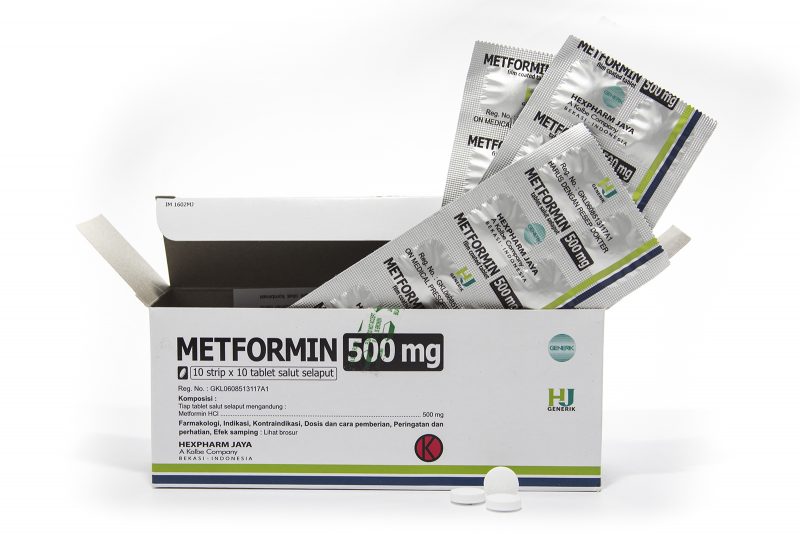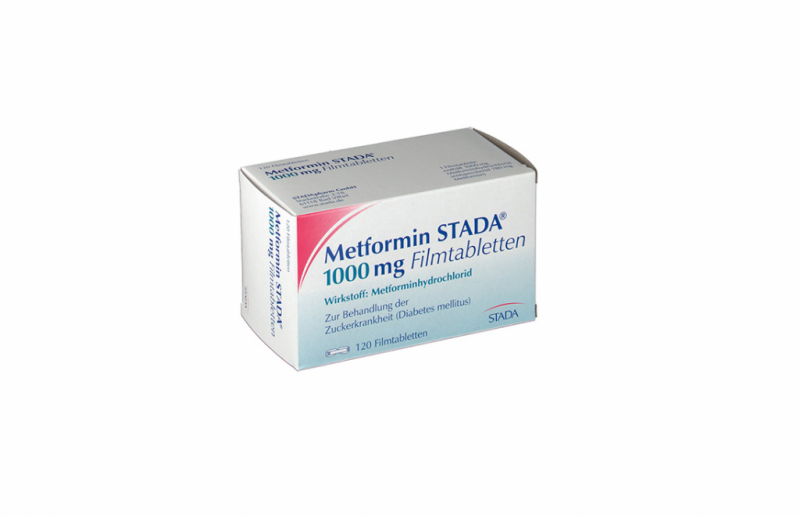Metformin tablets are considered the first drug for the prevention of complications of diabetes mellitus, as well as vascular diseases. Today, this remedy is considered the most popular, as well as widely used sugar-lowering and anti-diabetic drug of mild effect.
Material Content:
The composition of the drug
One tablet contains 500 and 850 mg of metformin hydrochloride (dimethylbiguanide) - the main compound. The component composition contains a list of additional elements: povidone, starch, magnesium stearate, talc. The shell contains titanium dioxide, methacrylic acid and a copolymer. The medicine is available in cardboard packaging - three plates of ten tablets.
Pharmacological properties and indications for use
This hypoglycemic drug belongs to the class of biguanides, the main task of which is to reduce gluconeogenesis in the liver. It directly affects the level of glucose in the blood with an effect that can be compared with other antidiabetic drugs. The medicine is not capable of causing hyperinsulinemia, but on the contrary, fasting insulin levels are reduced, which is extremely positive for insulin sensitivity. And also there is an improvement in glucose metabolism and an increase in tissue sensitization to insulin.
It is worth noting that prolonged use of the drug reduces body weight. This action is due to a decrease in the rate of fat oxidation and cholesterol and triglycerides. Metformin prevents the development of diabetic retinopathy, angiopathy, and also has a positive effect on the vascular walls and tissues of the heart.
In what other cases is the medicine used:
- Type 2 diabetes mellitus (non-insulin dependent, obese patients).
- In addition with insulin: for type 2 diabetes mellitus, which is accompanied by secondary insulin resistance.
- Polycystic ovary.
- Fatty liver hepatosis.
- Prediabetes.
- Diabetes during pregnancy.
Medical medication has a positive effect on the processes occurring in the liver, and also reduces the burden on this organ.
Instructions for taking Metformin tablets
The initial dose for adults is from 500 to 1000 mg per day, that is, up to two tablets. Two weeks later, an excess of the initial norm after analysis for blood glucose is allowed. After this, 1500-2000 mg per day is prescribed - 3-4 tablets. Patients should not take more than 6 tablets per day. Elderly patients should take up to two tablets. The medicine is drunk entirely during or after a meal.
During pregnancy and lactation
During the period of gestation and lactation, this drug, as a rule, is not prescribed. However, in some cases, the drug is recommended for the treatment of polycystic ovary. In case of pregnancy, the drug compounds will not harm the fetus if you stop taking the medication immediately after the news.
Drug interaction
Co-administration of insulin and metformin leads to a decrease in blood sugar. It is strictly not recommended to take metformin with danazol. Glycemia control with prescribed antipsychotics is also required. The hypoglycemic effect of Metformin may be somewhat reduced when taken concomitantly with oral contraceptives, hormones, and diuretics. The compatibility of the drug with cimetidine significantly increases the risk of lactic acidosis.
Contraindications, side effects and overdose
According to the instructions for use, this drug contains a fairly extensive list of contraindications - this must be considered before starting therapeutic treatment.
Tablets for diabetes are strictly prohibited in such cases:
- ketoacidosis;
- impaired kidney function;
- a disorder that progresses with such symptoms: bouts of vomiting, infection, kidney infection, bronchial disease;
- violation leading to tissue hypoxia (heart failure and others);
- serious surgery;
- alcohol abuse;
- acidosis;
- hypocaloric diet;
- pregnancy period;
- treatment of children under 18 years of age;
- individual hypersensitivity to individual components from the composition.
With caution and under the close supervision of a specialist, the drug is prescribed to patients over 55 years of age who are engaged in hard work or work that increases the risk of acidosis.
The possibility of the appearance of unwanted side effects is also not ruled out:
- Attacks of nausea, a taste of metal, loss of appetite, indigestion, pain.
- It is extremely rare - lactic acidosis (while treatment is discontinued), more often - hypovitaminosis.
- Megaloblastic anemia.
- Endocrine disorders, hypoglycemia.
- Inadequate response of the immune system: allergy, urticaria, itching.
With a significant excess of the allowable norm of the drug, signs of an overdose develop. The most dangerous outcome is complications in the form of lactic acidosis. Signs of a fatal condition are vomiting, fever to subfebrile indicators, muscle pain, diarrhea, rapid breathing and coma. In this case, the patient should immediately stop using the medication and seek help.After hospitalization, the concentration of lactate is determined and the diagnosis is confirmed. The main treatment is hemodialysis and the elimination of individual manifestations.
Analogues of a hypoglycemic drug
Among analogues, there are many therapeutic agents with an identical active composition. The main substitutes: Glucofage, Gliformin, Formmetin, Metfogamma and Siofor. Contraindications and side effects almost completely coincide with Metformin.



















